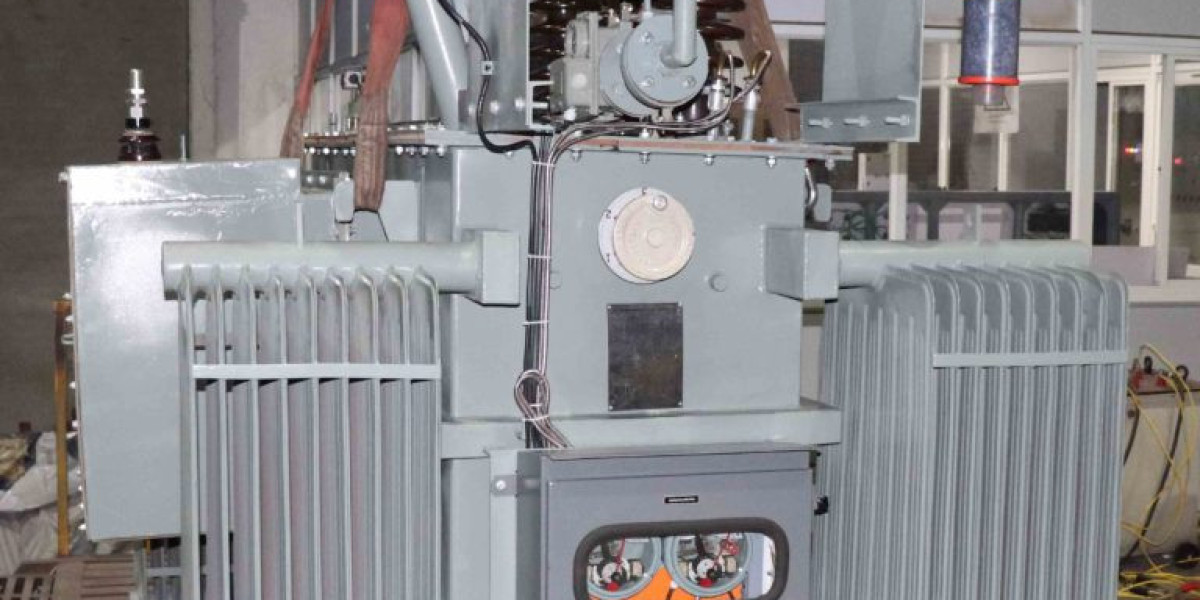INTRODUCTION
What Is a Transformer? Components in the electrical and power distribution systems of the modern world. They serve as the backbone of electrical transmission, enabling the safe and efficient movement of electricity from generation points to homes, industries, and commercial establishments. This article dives deep into what transformers are, explores various types, including power transformers, distribution transformers, 3-phase transformers, and furnace transformers, and highlights their critical roles in different applications.
What Is a Transformer?
A transformer is an electrical device that uses electromagnetic induction to move electrical energy between two or more circuits. It operates on the principle of Faraday's Law of Electromagnetic Induction, which states that a change in magnetic flux through a coil induces an electromotive force (EMF) in a nearby coil. The main function of transformers in an alternating current (AC) system is to step up or step down the voltage levels.
The basic components of a transformer include:
Primary winding: Receives the input voltage.
Secondary winding: Delivers the output voltage.
Magnetic core: Provides a path for magnetic flux, enhancing the efficiency of energy transfer.
Transformers are passive devices, meaning they do not generate power but instead transfer it from one voltage level to another with minimal losses.
Power Transformers
Power transformers are large and robust devices used in transmission networks to handle high voltages and heavy loads. They are typically found in power generation stations and substations, where they step up or step down voltage levels to suit transmission or distribution requirements.
Key Characteristics:
Operate at high voltage levels (above 33 kV)
High insulation levels
Designed for maximum efficiency, especially under full load
Often cooled using oil or forced air systems
Applications:
Transmission of electricity over long distances
Integration into grid systems
Connecting generation sources with the main distribution lines
Because power transformers handle high loads, they are engineered for durability and long service life, often including advanced monitoring systems for real-time diagnostics.
Distribution Transformers
Distribution transformers are used at the end of an electrical distribution system. Their primary function is to step down voltage levels from the transmission line to a level suitable for residential, commercial, or industrial use.
Key Characteristics:
Operate at lower voltages (typically below 33 kV)
Designed for efficiency at partial or light loads
Small and positioned on pads, poles, or subterranean vaults
Typically use natural oil or air cooling
Applications:
Residential neighborhoods
Small businesses and commercial buildings
Rural and urban power distribution systems
Distribution transformers are critical in ensuring that end users receive electricity at safe and usable voltage levels. They are usually more numerous than power transformers and are designed for ease of maintenance.
3-Phase Transformers
3-phase transformers are used in three-phase power systems, which are the standard for large-scale power generation and distribution due to their efficiency and balanced load characteristics.
Key Characteristics:
can be constructed using three single-phase transformers or as a single unit.
Provides a balanced load, improving system stability
More efficient in power transmission than single-phase systems
Applications:
Industrial plants
Commercial buildings
Electrical substations
Three-phase transformers are essential in systems that require large amounts of power, such as manufacturing facilities or high-rise buildings. They support the efficient operation of motors and other three-phase machinery.
Furnace Transformers
Furnace transformers are specially designed for use in electric arc furnaces (EAF) or induction furnaces. These transformers must handle extremely high currents and operate under highly fluctuating loads.
Key Characteristics:
Robust construction to handle high thermal and electrical stresses
Typically equipped with on-load tap changers (OLTC) to manage voltage regulation
May require specialized cooling systems
Applications:
Steel production plants
Foundries
Metallurgical operations
Because furnace transformers are exposed to harsh conditions and frequent load changes, they are designed with enhanced safety features and durable materials to withstand their demanding environments.
Transformers in Modern Power Systems
Transformers play an indispensable role in the modern electrical grid. Without them, it would be impossible to transmit electricity efficiently over long distances or to distribute it to end users safely. Innovations in transformer technology continue to improve performance, reliability, and integration with smart grid systems.
Key trends include:
Use of smart sensors and monitoring systems
Development of eco-friendly and dry-type transformers
Enhanced insulation and cooling technologies
Integration with renewable energy systems
Conclusion
Transformers are critical to the infrastructure that powers our world. From the massive power transformers at generation plants to the distribution transformers outside your home, each type plays a unique and vital role. Understanding the different types of transformers—power, distribution, 3-phase, and furnace—helps highlight how electricity is efficiently and safely delivered across vast distances and diverse applications. As technology advances, transformers will continue to evolve, supporting the future of sustainable and intelligent power systems.








